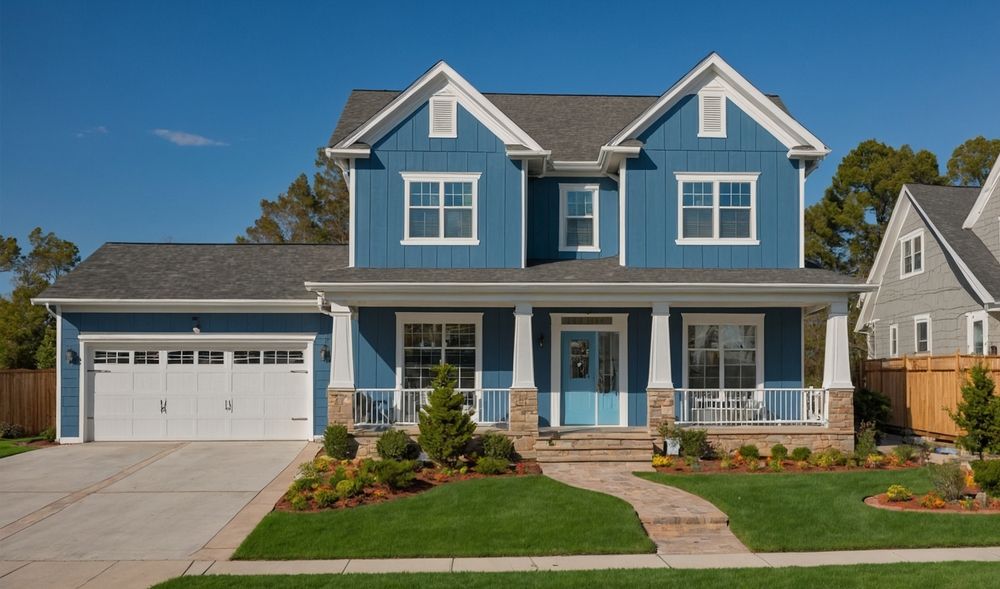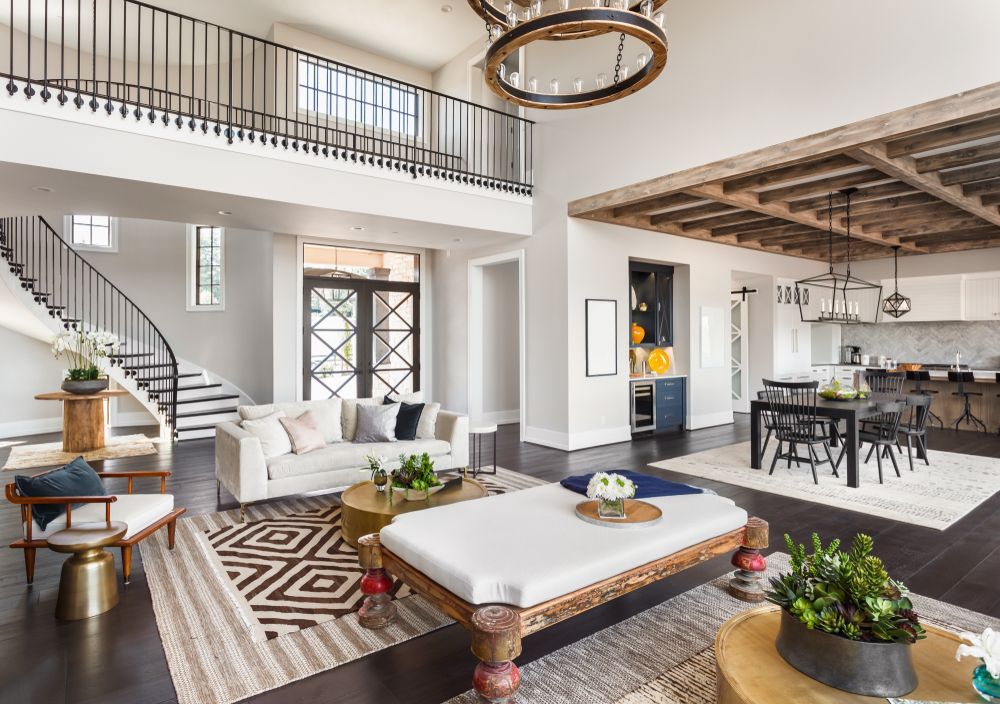How to Choose Siding for Coastal Homes
Living near the coast comes with incredible views and a unique lifestyle, but it also brings tough weather conditions. Salt air, heavy winds, high humidity, and constant moisture can wear down the exterior of a home faster than in inland areas. For homeowners, the challenge is simple: how do you protect your house while keeping it beautiful?
The answer lies in choosing the right siding for coastal homes. Not all materials are made to withstand harsh seaside climates, so selecting the right option is one of the most important decisions you’ll make for your property. Working with experienced custom home builders ensures you not only get professional advice but also the confidence that your siding will last for years.
In this guide, we’ll explore the best siding for coastal areas, review the most durable materials for oceanfront homes, and share practical tips to help you make a smart investment in your home’s exterior.
Why Coastal Homes Need Special Siding
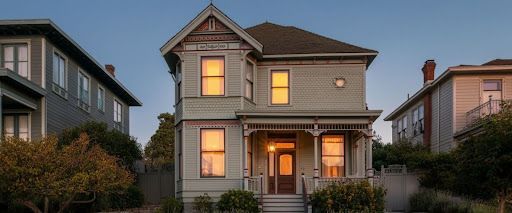
Homes near the water face unique challenges that ordinary siding can’t handle:
- Salt Air Corrosion: Salt speeds up rust and degrades fast, especially on metals or exposed surfaces.
- High Moisture & Humidity: Coastal air can soak into siding, leading to mold, mildew, and rot, costly and damaging over time. Low-porosity or water-resistant materials work best.
- Sun and UV Exposure: Strong sunlight fades paint and breaks down materials if not UV-resistant.
- Wind and Storm Damage: Coastal winds can loosen panels, tear up weak siding, and strip away coatings.
These pressures mean your siding needs strength, water resistance, and longevity, all while reflecting your home's style.
Top Factors to Consider When Choosing Siding for Coastal Homes
Here’s what matters most and why:
1. Durability Against Salt and Moisture
Choose materials designed to resist corrosion, mold, and swelling in humid conditions.
2. Low Maintenance
You don’t want to repaint yearly or chase factory coatings. Choose siding that's easy to clean and doesn't need constant touch-ups.
3. UV Protection & Color Stability
Opt for materials with fade-resistant finishes or integrated UV protection.
4. Wind-Resistance
Look for impact-resistant siding installed with secure fasteners, especially if you live in hurricane-prone areas.
5. Aesthetic Versatility
You want siding that matches beach or coastal style while still handling tough weather.
6. Budget & Long-Term Value
Upfront costs matter but consider maintenance and replacement costs too. Durable siding often saves money over time.
Best Siding for Coastal Areas
Not every siding can handle life by the sea. The right choice depends on balancing durability, aesthetics, cost, and how much time you want to spend on upkeep. Here’s a closer look at the best siding for coastal areas and what makes each one stand out:
1. Fiber Cement Siding – The Gold Standard
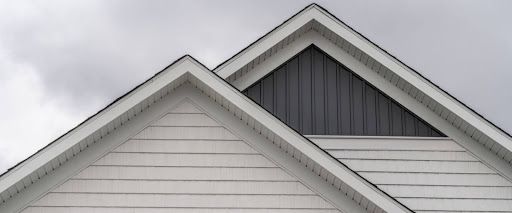
Fiber cement siding is often considered the most reliable siding for coastal homes. Made from cement, sand, and cellulose fibers, it combines toughness with style.
- Durability: It resists swelling, rotting, and warping in humid coastal climates. Unlike wood, it doesn’t attract pests, and unlike metal, it won’t corrode in salt air.
- Storm Resistance: Heavy and impact-resistant, it can withstand strong coastal winds and flying debris better than lighter materials.
- Fire & Pest Resistance: It doesn’t burn and keeps termites away, giving your home extra protection.
- Maintenance: It requires occasional cleaning and repainting every 15–20 years, but far less frequent upkeep than natural wood.
- Style & Appearance: Available in designs that mimic wood, stucco, or stone. Pre-finished boards with baked-on color reduce fading from sun exposure.
Pro Tip: For homeowners who want long-lasting protection without sacrificing curb appeal, fiber cement is often the best siding for oceanfront homes.
2. Vinyl Siding – Affordable and Versatile
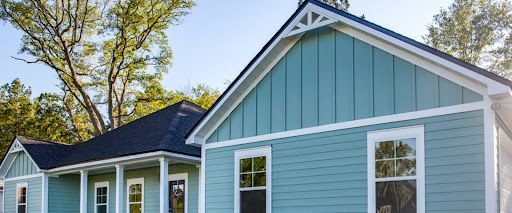
Vinyl siding remains one of the most widely used options, even in coastal regions. However, not all vinyl performs equally well by the ocean.
- Durability: Modern premium vinyl siding is formulated to resist fading, cracking, and warping from salt and UV exposure. Coastal-grade vinyl can hold up well if installed correctly.
- Maintenance: Virtually maintenance-free. Just a seasonal rinse to remove salt buildup keeps it looking fresh.
- Style & Appearance: Comes in hundreds of colors, textures, and profiles, allowing flexibility in design. It can even mimic the look of cedar shingles.
- Cost: Vinyl is among the most affordable siding options, making it attractive for homeowners on a budget.
- Limitations: Cheaper vinyl products can fade, crack in extreme sun, or loosen in hurricane-level winds. Reinforced installation and higher-grade products are essential for coastal use.
Pro Tip: For those who want budget-friendly siding for coastal homes, high-quality vinyl siding is a good choice, as long as you invest in the right grade.
3. Cedar & Engineered Wood Siding – Timeless Coastal Charm
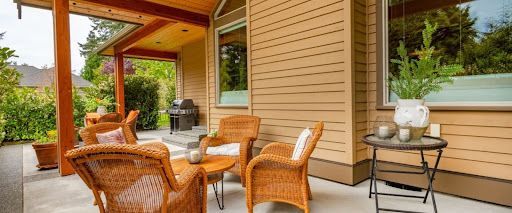
Wood siding, particularly cedar shingles, has long been associated with charming beach cottages and seaside homes. While undeniably beautiful, natural wood struggles with coastal climates.
- Durability: Cedar naturally resists insects and decay, but salt air and constant moisture can still cause rot, swelling, or mildew if not sealed properly.
- Engineered Wood Advantage: Engineered wood siding combines wood fibers with resins for better moisture resistance and dimensional stability. It offers the same aesthetic with fewer maintenance demands.
- Maintenance: Natural wood requires frequent painting or staining, along with sealing to protect against moisture. Engineered wood reduces maintenance but still needs attention compared to vinyl or fiber cement.
- Style & Appearance: Offers unmatched natural beauty and authenticity. Popular for Cape Cod–style and traditional coastal architecture.
- Cost: Higher than vinyl but varies widely based on species, finish, and whether you choose natural or engineered wood.
Pro Tip: If you love the classic coastal look, engineered wood gives you charm with better durability, while cedar is best for those who don’t mind the extra upkeep.
4. Metal Siding – Strong Against Salt
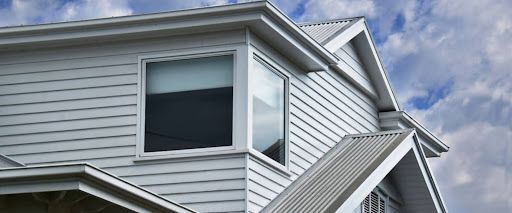
Aluminum and certain coated steels are excellent choices for durable siding in coastal regions, provided they’re properly protected against corrosion.
- Durability: Aluminum siding resists rust naturally and handles salt air far better than standard steel. With protective coatings, it can last decades.
- Maintenance: Requires occasional washing and repainting every 15–20 years. Unlike wood, it won’t rot, and unlike vinyl, it doesn’t warp.
- Style & Appearance: Can look sleek and modern, making it a great fit for contemporary coastal homes.
- Cost: Generally more affordable than fiber cement but more expensive than vinyl.
- Limitations: Prone to denting from hail or impact. Without proper coating, cheaper steel siding can corrode quickly in salty air.
Pro Tip: For homeowners near the ocean, aluminum siding is often the better choice over steel thanks to its natural resistance to corrosion.
5. Composite & Polymer Siding – High-Tech Durability

Composite siding blends synthetic materials for strength and resilience. Polymer siding, in particular, is engineered to resist the harshest environments, making it a rising star in coastal home exterior materials.
- Durability: Engineered to resist moisture, salt, and UV rays without warping, cracking, or fading.
- Maintenance: Practically maintenance-free. An occasional wash is all it needs.
- Style & Appearance: Designed to replicate natural wood or shingles, often indistinguishable from the real thing. Available in a wide range of styles and colors.
- Cost: Higher upfront cost, but its long lifespan and low maintenance balance the investment.
- Eco-Friendly Options: Many composite products are made from recycled or sustainable materials.
Pro Tip: If you want sustainable housing as well as modern, durable, and low-maintenance, composites and polymers are excellent choices for oceanfront homes.
Hoegler & Kren Builders: Coastal Home Exterior Expertise
Choosing the right siding isn’t just about picking a material, it’s about proper
siding installation and long-term support. That’s where Hoegler & Kren Builders come in. We understand the challenges that come with oceanfront living and also coastal home exterior materials very well.
If you’re ready to protect your home from salt, sun, and storms, schedule your consultation to choose siding that’s built to withstand the coast, strong, reliable, and designed to last.
Conclusion: Protect Your Coastal Home with the Right Siding
Coastal living comes with its challenges, but choosing the right siding can protect your home while keeping it beautiful for decades. Whether it’s fiber cement, vinyl, engineered wood, or composite siding, the goal is to balance durability, style, and maintenance.
FAQs About Siding for Coastal Homes
What is the most durable siding for oceanfront homes?
Fiber cement siding is considered the most durable because it resists salt, wind, and moisture damage.
Can vinyl siding last in coastal areas?
Yes, but choose high-quality vinyl designed for coastal conditions. Cheaper options may fade or crack over time.
Is wood siding a good option for beach houses?
Traditional wood can be high-maintenance, but engineered wood provides a more durable alternative while keeping the natural look.
How often should I clean siding in coastal climates?
Rinsing every few months helps remove salt buildup and prevents long-term damage.


